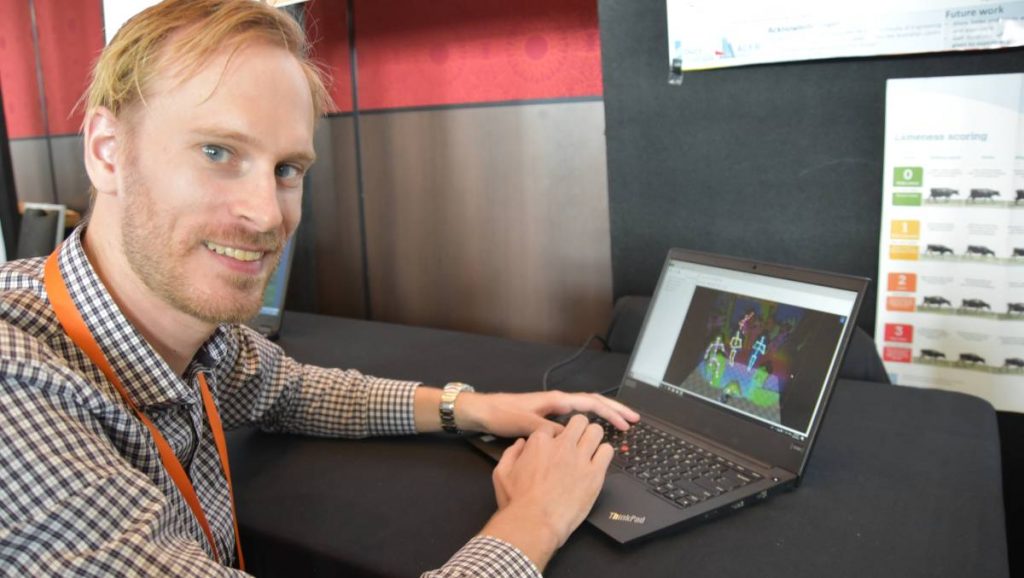
Lameness is a common health issue and 5-20 per cent of a herd may be lame at any given time. It is the third most costly health issue behind mastitis and fertility, and costs roughly $250 per case in reduced milk production, animal treatment and labour.
Despite this, systematic on-farm monitoring of lameness levels is not common, neither at herd level nor per individual animal, due to the time and skill required to perform locomotion scoring. An example of a locomotion scoring system is the Dairy Australia Healthy Hooves four-level scale, where cows are classified depending on their gait as:
0: not lame.
1: uneven gait, could be mildly lame.
2: lame.
3: very lame
Recent research in Australia and abroad shows that on-farm estimates of the number of lame cows (levels 2 and 3) are a lot lower than those identified by systematic locomotion scoring.
In a NSW study, only 27 per cent of lame cows had been identified on-farm, while in a Western Victorian study only 24pc were identified on-farm. Each study scored about 19,000 cows across many farms.
Even when systematic locomotion scoring is done, it is still a subjective process and humans are just not good at providing reliable scores, especially at mildly lame levels.
Automatic lameness detection and monitoring has the potential to provide frequent, objective, and consistent lameness scores to farm staff.
I am a PhD student at the Australian Centre for Field Robotics at The University of Sydney working on this technology, using recent advances in computer vision and machine learning to detect and monitor lameness. These approaches coupled with large amounts of data have led to a performance that is better than humans in a range of automatic monitoring applications.
In my research, I use commercial off-the-shelf Microsoft Kinect 3D cameras mounted at the exit of a rotary milking platform. These cameras provide depth images, where the value of a pixel represents how far away an object is from the sensor.
Two cameras are mounted above the race to record head, spine, and hip motion as the cow walks past, and two cameras are mounted at knee height alongside the race to record limb motion. A GoPro camera five metres to the side is used to record each cow passing for ground-truth lameness scoring by two expert scorers.
In each image, a convolutional neural network is used to detect body points of interest for lameness monitoring. These include hooves, fetlocks, carpal/tarsal joints, hip, collar and the tip of skull. Training this neural network involves manually clicking on the body points in hundreds of images, and running these images through the network for hours on end while it learns what body parts to look for. After this process, the location of each body point can be determined in each new image.
From the body points in the side images, hoof placement location and time is determined. Multiple classical gait metrics are derived from this, such as stride length, stance time and step overlap. From the overhead body points, head bob, spine curvature and vertical hip displacement gait metrics are determined.
Gait metrics of each cow passing are used to classify the cow into two classes: not lame (scores 0, 1) and lame (scores 2, 3). The accuracy of predicting the correct class on 144 cow passings is about 65pc at the moment. This is similar to the agreement between two expert scorers who gave 70pc of these passings the same score.
The definition of correct lameness class is difficult, as scorers themselves only agree 70pc of the time. Prediction accuracy is expected to improve by lameness scoring more cow passings. It is also expected to improve by modelling each cow individually and looking for deviations from its non-lame baseline gait instead of modelling the entire herd together.
The sensing system presented here could not only be used for direct treatment of lame cows, but could contribute to better genetic selection on a longer timescale. Continuous large-scale objective monitoring of both lameness and other phenotypes such as udder conformation and body condition score can contribute to improved genetic traits, allowing for healthier, more efficient cattle for Australian dairy farmers.
My research is supported by Dairy Australia and the Faculty of Engineering, and is supervised by Assoc. Prof. Cameron Clark, Dr James Underwood and Dr Mitch Bryson. Dairy Australia has extensive online guides for identifying, treating, and preventing lameness, along with a lameness cost calculator and links to Healthy Hooves extension workshops.
*John Gardenier, PhD candidate at the University of Sydney, was the winner of the 2020 Australian Dairy Conference’s Young Dairy Scientist Award competition. This is an edited version of the article he submitted as part of that competition.

























